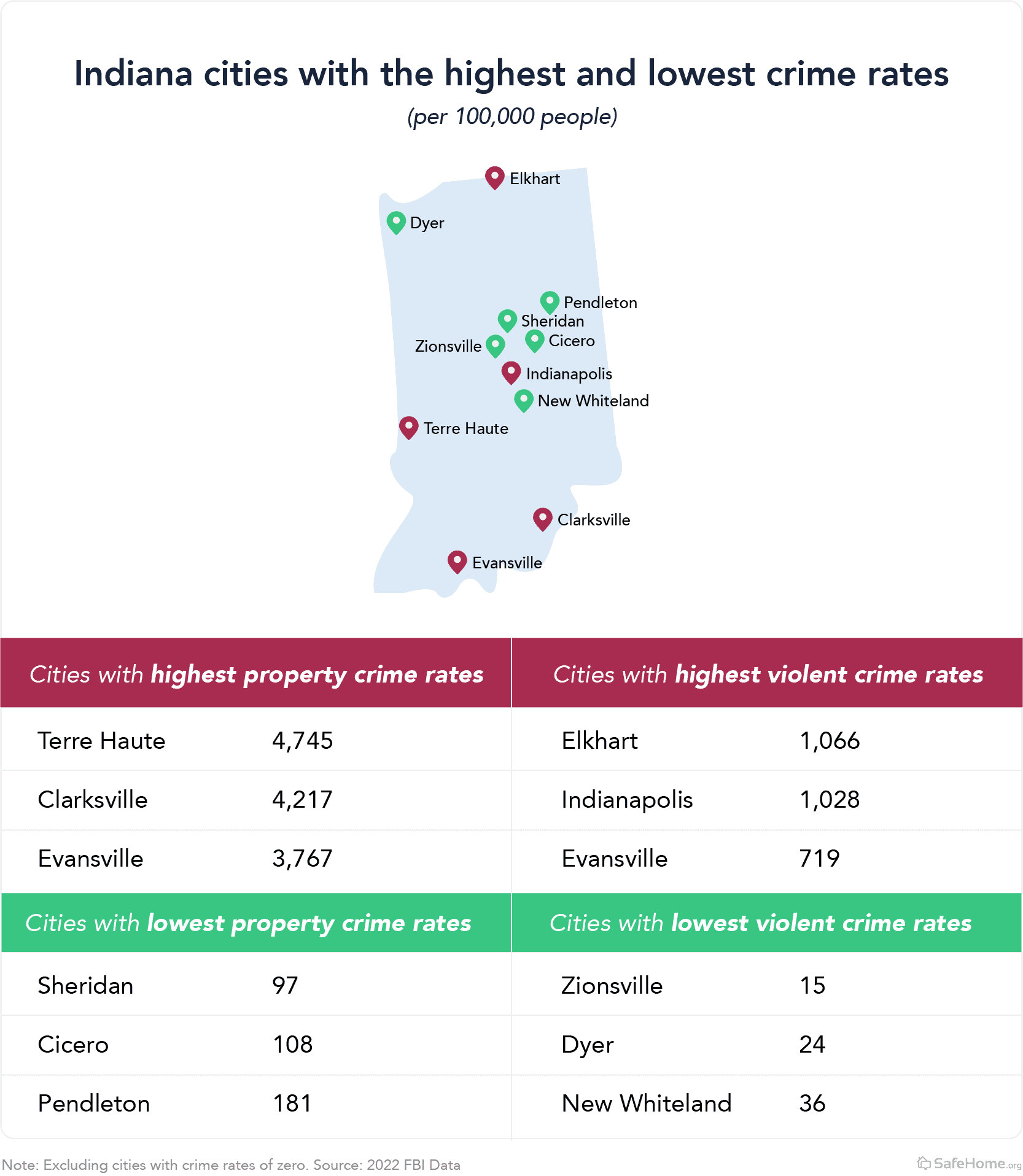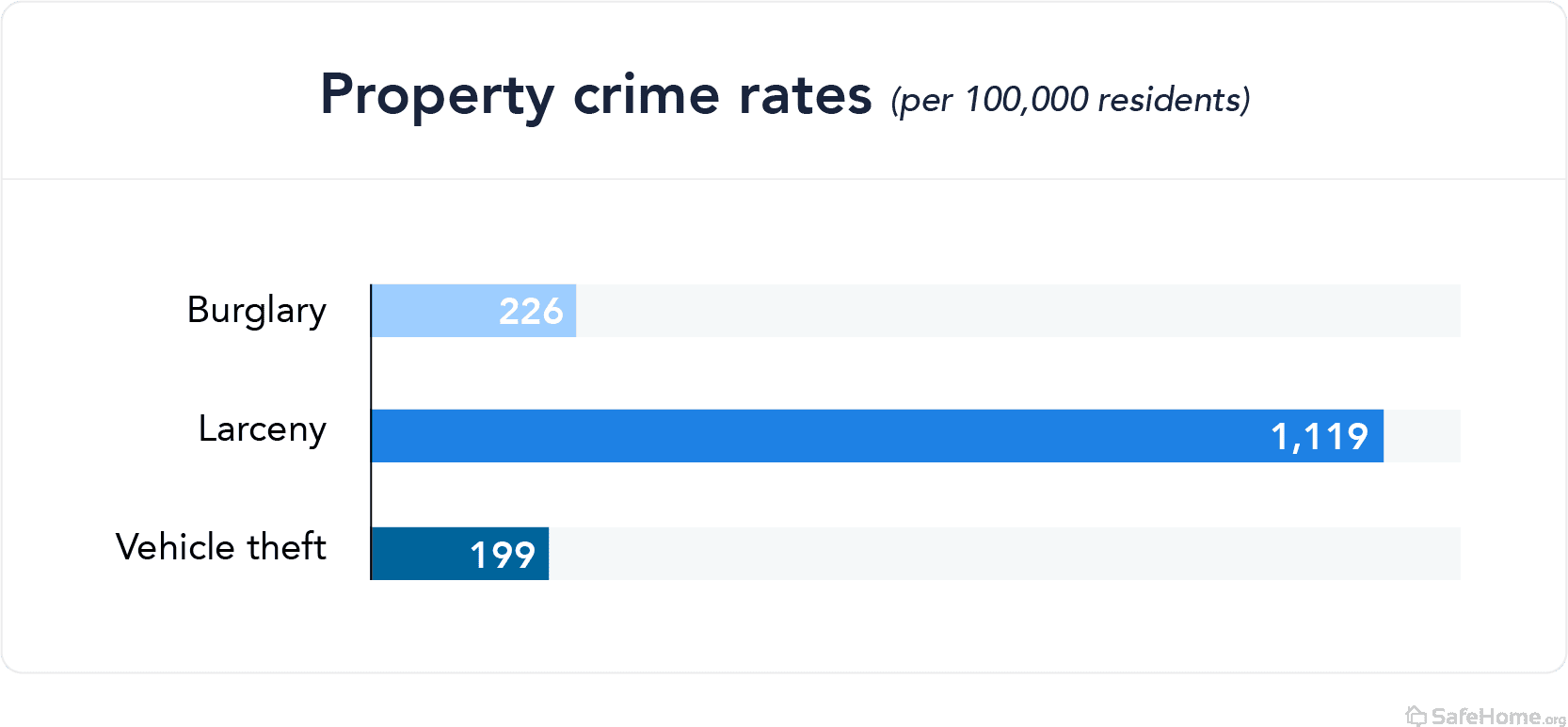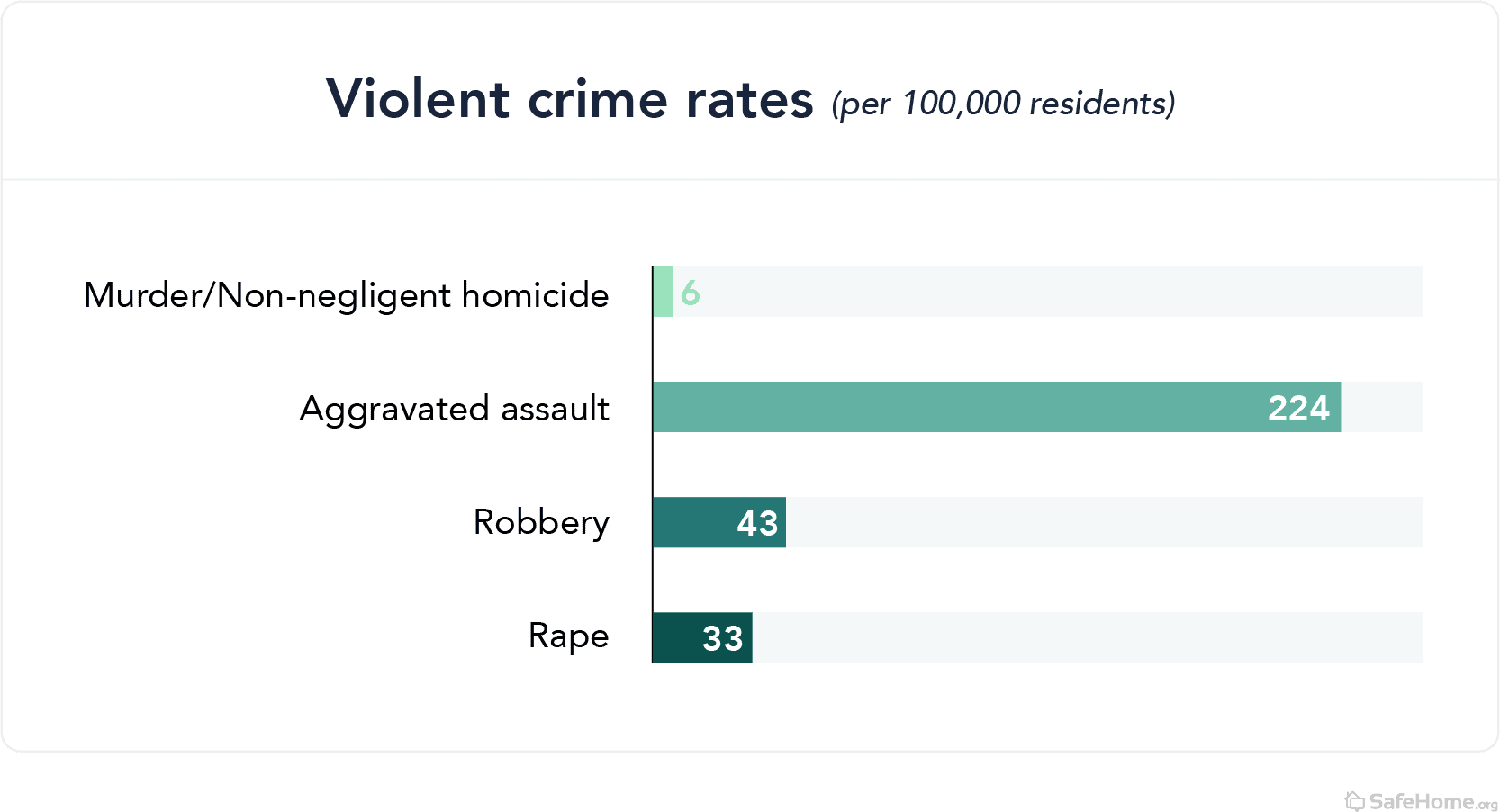The Most Safest and Dangerous Cities in Indiana

While the state of Indiana has lower crime rates than many other Midwestern states, some of its cities and towns have surging crime. For example, the Muncie metro area, home to Ball State University (the state’s third-largest public college/university), ranks 12th among all metro areas for its homicide rate.
Given that crime is a hyper-local issue, it’s only fair to explore crime around Indiana cities. Generally, the larger the community, the more crime will take place there. This holds true for many of Indiana’s biggest metro areas, including Indianapolis, where the murder rate is 11 per 100,000 people, nearly double the overall rate of the state. But Indy is not the state leader for murder. As we’ve already touched on, that dubious distinction goes to Muncie, which ranks 12th among the 300-plus metro areas with available data.
Indiana metro area crime rates per 100,000 people (rank among 300+ metro areas)
| Metro area | Violent crime (overall) | Murder/non-negligent manslaughter | Rape | Robbery | Aggravated assault | Property crime (overall) | Burglary | Larceny-theft | Motor vehicle theft |
|---|---|---|---|---|---|---|---|---|---|
| Bloomington | 314 (188th) | 3 (221st) | 64 (60th) | 42 (138th) | 206 (210th) | 1,576 (219th) | 196 (237th) | 1,261 (194th) | 120 (249th) |
| Elkhart-Goshen | 352 (156th) | 5 (156th) | 30 (254th) | 32 (187th) | 285 (135th) | 1,410 (246th) | 247 (183rd) | 981 (258th) | 182 (179th) |
| Evansville | 417 (116th) | 10 (44th) | 50 (116th) | 31 (191st) | 325 (103rd) | 1,979 (148th) | 310 (124th) | 1,465 (150th) | 204 (155th) |
| Fort Wayne | 200 (269th) | 5 (164th) | 33 (241st) | 48 (115th) | 114 (279th) | 1,732 (193rd) | 179 (252nd) | 1,394 (171st) | 159 (205th) |
| Indianapolis-Carmel-Anderson | 501 (74th) | 11 (38th) | 40 (191st) | 87 (35th) | 362 (77th) | 2,019 (138th) | 291 (142nd) | 1,435 (159th) | 294 (86th) |
| Kokomo | 410 (120th) | 6 (119th) | 36 (219th) | 18 (254th) | 351 (84th) | 1,229 (268th) | 276 (157th) | 818 (288th) | 135 (232nd) |
| Lafayette-West Lafayette | 274 (216th) | 1 (292nd) | 47 (143rd) | 20 (248th) | 206 (209th) | 1,318 (258th) | 182 (248th) | 982 (257th) | 155 (210th) |
| Michigan City-La Porte | 201 (268th) | 4 (195th) | 16 (307th) | 28 (210th) | 154 (250th) | 1,910 (169th) | 460 (48th) | 1,244 (200th) | 206 (151st) |
| Muncie | 332 (171st) | 18 (12th) | 38 (200th) | 29 (203rd) | 246 (162nd) | 1,863 (179th) | 342 (104th) | 1,270 (192nd) | 251 (114th) |
While crime is more common in larger cities, that’s not to say that smaller communities aren’t also at risk of criminal incidents. Bristol, Indiana, for example, has the highest property crime rate outside of metro areas — 3,702 per 100,000 people. It’s important to note, though, that Bristol’s high rate is likely due at least partly to two big factors: its small population (1,600) and its close proximity to another, larger community, Elkhart, part of the Elkhart-Goshen metro area. There is a third factor that could play a role in Bristol’s high property crime rate — it’s home to the RV Hall of Fame,1 which attracts tourists to the town.
Statewide Crime Trends in Indiana
Indiana, like many other Midwestern states, has lower-than-average rates of both property crime and violent crime. In both cases, the state’s overall rates are about 20 percent lower than the overall rates.
Property Crime in Indiana
When determining property crime rates in Indiana, we looked at larceny theft, burglary, and motor vehicle theft incidents.
- Indiana’s total property crime rate is 1,544 per 100,000 residents, which is about 21 percent lower than the overall U.S. property crime rate (1,954 per 100,000).
- Indiana ranks 37th among all states for property crime.
- Larceny is by far the most common type of property crime in Indiana (and everywhere else in the country, for that matter). Indiana’s larceny rate is 1,119per 100,000, a couple hundred points below the overall national rate:
Violent Crime in Indiana
Violent crimes like murder/non-negligent manslaughter, rape, robbery, and aggravated assault are much less common than property crimes.
- The overall violent crime rate in Indiana is 306 per 100,000 people, or about 20 percent lower than the national rate of 381 per 100,000.
- Indiana ranks 27th for violent crime nationally and is fifth among the 12 Midwestern states, largely due to its murder rate, which is 6.2 per 100,000. Fortunately, murder is the least common type of violent crime in Indiana.
Our data
Our data comes from comprehensive reporting compiled by the FBI and accessed via the Crime Data Explorer website. Property and violent crime state figures were drawn from Table 5 of the 2022 Crime in the U.S. Report. Metropolitan figures were found in Table 6, Crime in the U.S. by Metropolitan Statistical Area. City-level figures were drawn from Table 8, Offenses Known to Law Enforcement by State by City. The population figures in that table are U.S. Census Bureau provisional estimates as of July 1, 2020.
Limitations: According to the FBI, the data in the publication tables may differ from those released on the Explorer Pages of the CDE. These variations are due to the difference in methodologies between the publication tables and data displayed on the CDE. Please note that crime statistics are not the sole measure of a city’s safety.
Navigate Crime Data by State
- Alabama
- Alaska
- Arizona
- Arkansas
- California
- Colorado
- Connecticut
- Delaware
- Florida
- Georgia
- Hawaii
- Idaho
- Illinois
- Iowa
- Kansas
- Kentucky
- Louisiana
- Maine
- Maryland
- Massachusetts
- Michigan
- Minnesota
- Mississippi
- Missouri
- Montana
- Nebraska
- Nevada
- New Hampshire
- New Jersey
- New Mexico
- New York
- North Carolina
- North Dakota
- Ohio
- Oklahoma
- Oregon
- Pennsylvania
- Rhode Island
- South Carolina
- South Dakota
- Tennessee
- Texas
- Utah
- Vermont
- Virginia
- Washington
- West Virginia
- Wisconsin
- Wyoming
Citations
- RV/MH Hall of Fame. (2024).
https://www.rvmhhalloffame.org/



